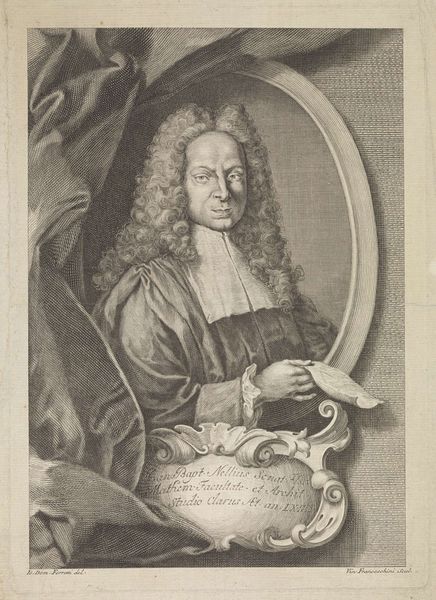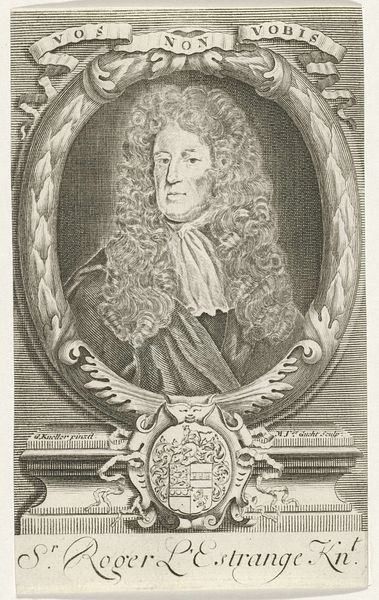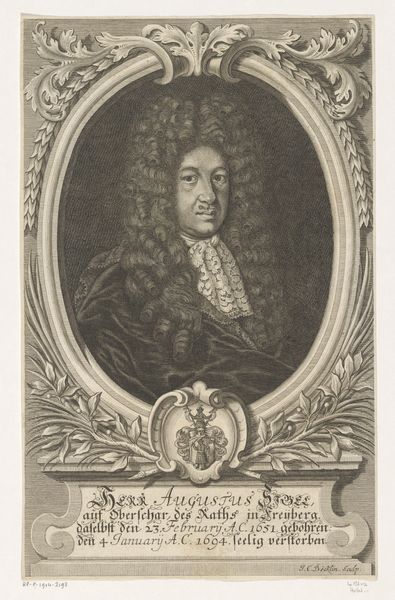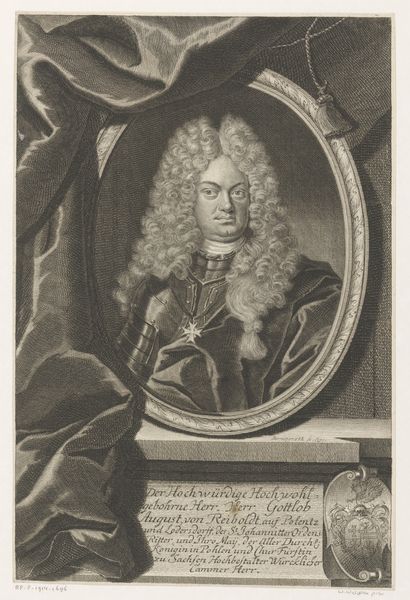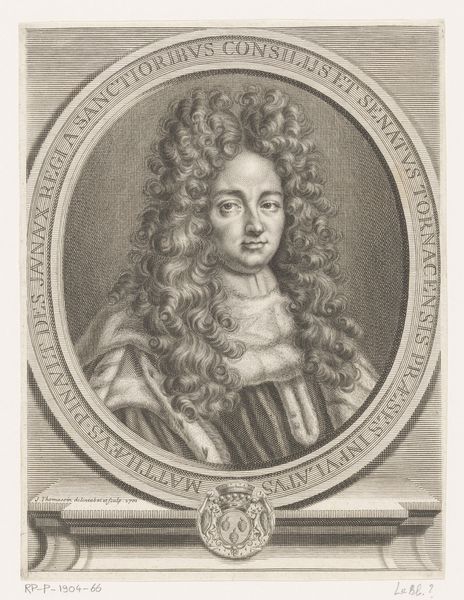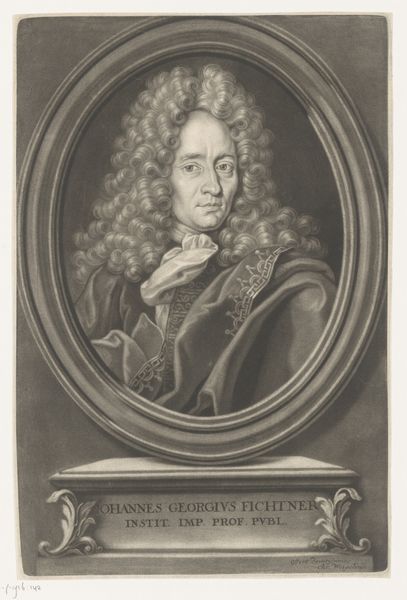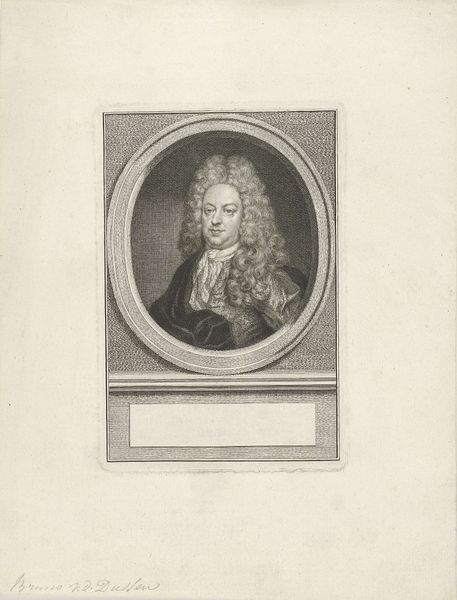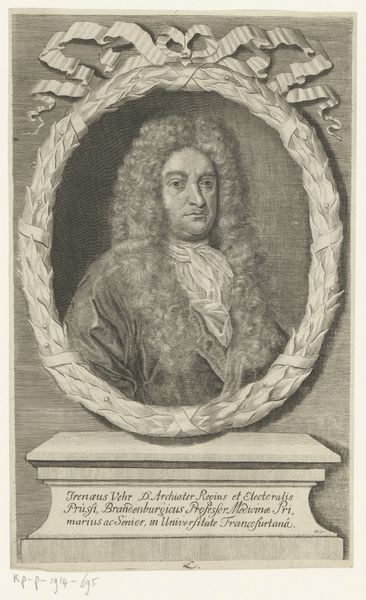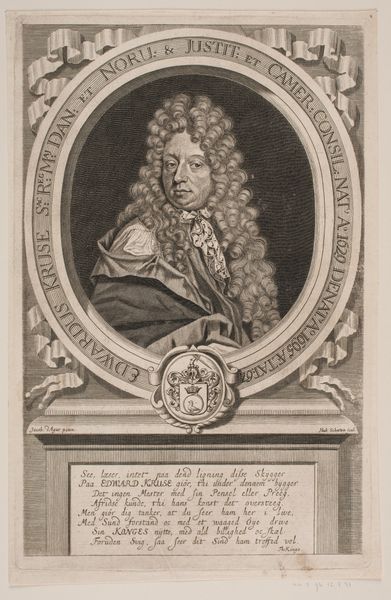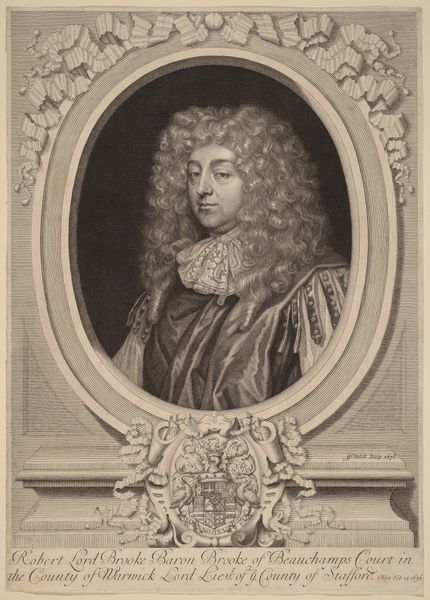
print, paper, engraving
#
portrait
#
baroque
# print
#
old engraving style
#
paper
#
portrait reference
#
portrait drawing
#
history-painting
#
engraving
Dimensions: width 196 mm, height 290 mm
Copyright: Rijks Museum: Open Domain
Editor: This is Ernst Ludwig Creite’s "Portret van Franz Ernst Brückmann," an engraving dating roughly from 1739 to 1765. I’m immediately struck by the formality and how the oval frame and heraldry almost enshrine the subject. What visual cues jump out at you? Curator: The framing is definitely key. Look at how the oval isolates Brückmann, elevating him, yes, but also recalling the classical tradition of portrait medallions – a way of preserving and immortalizing the individual through recognizable, established visual language. The heavy drapery hints at theater, suggesting that Brückmann's life, especially his public-facing role as "Medicin. Doct. Brunsvicensis", is in some sense a performance of status. Do you see how the composition creates a sense of inherited power and social role? Editor: I do now! The symbols build this powerful, idealized image. I'm curious about the seemingly straightforward Baroque portrait—how would it relate to art created earlier? Curator: Consider earlier emblematic traditions. Heraldry, here refined in the small escutcheon, carried coded visual information understood by contemporaries. A portrait became a codified visual archive – it speaks not only of the sitter’s individual identity but to their lineage, profession, and place in a complex social structure. The wig and robe are visual signals, what story might they communicate? Editor: A story about status, importance, maybe even a type of…intellectual performance? He becomes a symbol himself, in a way. It really highlights the cultural memory embedded in the portrait itself. Curator: Exactly! And this visual language transcends time, constantly renegotiated by succeeding generations, creating enduring meaning. Perhaps you can find the ways images and their symbols connect history to now. Editor: Thank you! Now I realize how portraits build shared visual understanding within society.
Comments
No comments
Be the first to comment and join the conversation on the ultimate creative platform.
